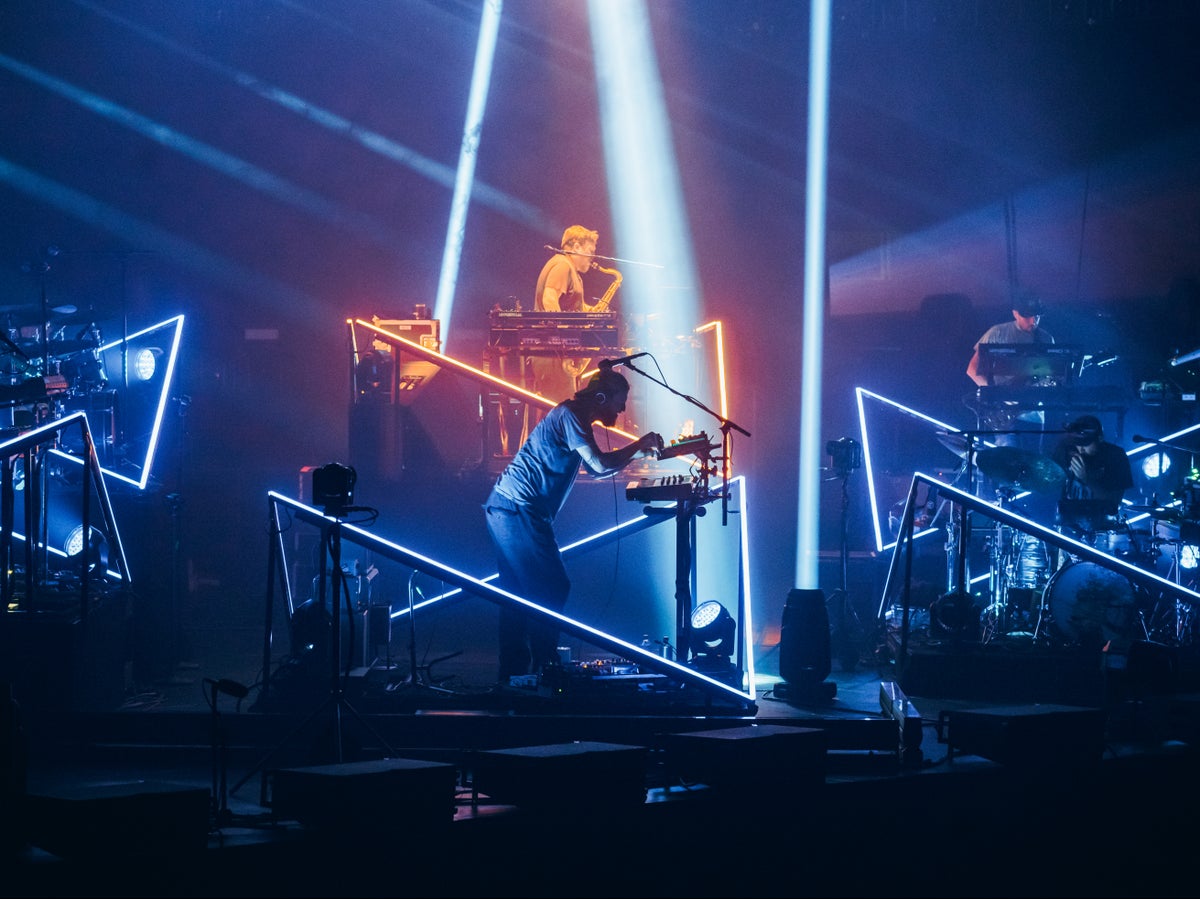
We’re light years from the hunting cabins of Wisconsin now. Six neon art podiums, arranged in a council-like circle, enclose racks of keyboards and two drum kits. Curtains of light enshroud the stage in angular sheets. A flock of floating mirrors hung from the lighting rig reflect beams of light at skewed, flowing angles, much as Bon Iver bends music.
The stage set for the first of Justin Vernon’s two Wembley shows reveals just how far the haunting alt-folk artist of 2007’s For Emma, Forever Ago has mutated. Since that cult breakthrough album, sparsely recorded in a heartbroken fever in his father’s log cabin in the woods, the Wisconsin falsetto troubadour of old has evolved into a cutting-edge electro-soul pioneer. Not that he looks the part, appearing amid the technological tangle with a heavy beard, backwards baseball cap and chunky headphones. He looks more like the sort of Midwestern local radio DJ who’d get fired for barricading himself in his studio and playing Creedence Clearwater Revival for 24 hours straight.
Like the pivotal 21st-century hip-hop acts, Vernon understood that soulful music – be it folk, country or soul itself – would remain eternally relevant, but that people always want to hear new ways for it to suffer. Hence his records – including 2019’s i,i, for which this is a very belated tour – now chop and corrode classic melodies by means of static and steam, chorale vocal effects, industrial synthetics and all the techno-goblin tricks in the modern R&B playbook.
It’s what’s made him the go-to “neo folkie” collaborator for Kanye West and, recently, Taylor Swift’s Folklore and Evermore albums, and his live show such a deeply engaging experience. He opens with “22 (OVER S∞∞N)” (many of his song titles these days could have been copied from a whiteboard at a Nasa mission to Venus), which shrouds a sensitive jazz folk torch song in a cloud of manipulated soul vocal samples without losing an ounce of its vulnerability. Later, “iMi” pioneers industrial soul, “Sh’Diah” is more sizzle than song and “715 – CRΣΣKS” is the sound of a virus-stricken AI writing a boyband big ballad. Thanks to an immersive L-ISA Hyperreal sound system, “10 d E A T h b R E a s T ⚄ ⚄” hits like a dirty bomb, with its deafening radio interference, corrupt file vocals and bass so deep it rattles spine and rafter.
Crucially, though, Vernon never lets his melodies get crushed in the machinery: the song is always paramount. Witness numbers such as “666 ʇ” and “Towers” weaving R&B electronics into drivetime AOR country rock and War on Drugs Americana to infectious effect, or “Naeem” and “Blood Bank” building into bombastic rock showstoppers that actually get the floor headbanging. And early classics shine: “Skinny Love” gets the two drummers and gang-chant treatment, “Holocene” is gorgeous celestial folk and “Flume” is transformed into a multi-harmony pony trek that wouldn’t sound out of place in a 24-hour Creedence marathon. “There’s a circuit that runs through all of us,” Vernon says before a closing “RABi”, envisioning a happier, more unified world but inadvertently crystalising the appeal of his music too. Bon Iver, you see, is where technology and humanity most perfectly interface.







